Disclosure: This article contains affiliate links. We may earn a commission from purchases at no extra cost to you, which helps our travel content.
Coming back to Busan always feels like returning to a piece of myself I didn't know was missing. As someone born here but raised oceans away, my relationship with this vibrant coastal city is complicated yet beautiful – especially when explored through its incredible food scene. The first time I brought my college roommates here, we stumbled through markets and side streets, pointing at foods we couldn't name and using my embarrassingly basic Korean to order. Now, after multiple return trips and countless meals, I've compiled what I consider the ultimate culinary map of my birth city. Whether you're planning a romantic getaway or simply want to eat your way through one of Korea's most delicious destinations, this guide combines my personal journey with practical advice for navigating Busan's seafood markets, street food alleys, and soju traditions that make dining here an unforgettable experience.
Jagalchi Fish Market: A Symphony of Seafood
Stepping into Jagalchi Fish Market is like diving headfirst into the beating heart of Busan's culinary identity. The smell hits you first – that distinctive blend of salt water, fresh catch, and the unmistakable aroma of sea creatures still glistening from the morning's harvest. This isn't just Korea's largest seafood market; it's a cultural institution.
On my first visit back to Busan during college, I remember standing frozen at the entrance, overwhelmed by the cacophony of ajummas (middle-aged women) shouting prices and the dizzying array of marine life – some still swimming in tanks, others splayed on beds of ice. My broken Korean earned me both amused smiles and occasionally better prices as vendors discovered I was a 'returning son.'
The market's first floor is where the magic happens: rows upon rows of stalls selling everything from giant octopus to tiny sardines. The real pro move? Purchase your seafood downstairs, then head upstairs to one of the restaurants that will prepare your fresh catch for an additional fee. My go-to order is always a hwe (raw fish) platter with sides of spicy gochujang sauce and crisp vegetables.
Don't miss the live abalone, sea squirt, and the famous sannakji (live octopus) – yes, the tentacles still wriggle on your plate! If that's too adventurous, the grilled mackerel is a safer yet equally delicious choice. To capture clear photos in the market's challenging lighting, I always bring my compact camera which handles low light beautifully without being obtrusive.

💡 Pro Tips
- Visit between 8-10am for the freshest selection and to watch the morning auctions
- Point to what you want if language is a barrier – most vendors understand basic gestures
- Negotiate prices gently, especially if buying multiple items
BIFF Square: Street Food Paradise
Named after the Busan International Film Festival, BIFF Square transforms from a cinematic celebration venue to what I consider the ultimate street food playground. Located in the bustling Nampo-dong area, this pedestrian street becomes particularly magical as evening approaches and food stalls illuminate the night.
My first recommendation? Come hungry – seriously hungry. The variety here is staggering, and you'll want to try multiple small portions rather than committing to one meal. Start with ssiat hotteok, a Busan specialty that elevates the standard Korean sweet pancake by stuffing it with seeds and nuts before frying to golden perfection. The contrast between the crispy exterior and the gooey, sweet interior makes it worth every calorie.
Next, hunt down eomuk (fish cake) skewers swimming in steaming broth – perfect for cooler evenings. The vendor near the main entrance has been serving the same recipe for decades, and the depth of flavor in her anchovy broth is unmatched. For something uniquely Busan, look for dwaeji gukbap (pork soup with rice) stalls, where the rich, milky broth comes from hours of slow-simmering pork bones.
My wife and I have a tradition of challenging each other to try something new each visit. Last time, it was bundaegi (silkworm pupae) for me – an acquired taste that I'm still... acquiring. She opted for jokbal (pig's trotters), which was actually delicious despite her initial hesitation.
To keep track of our favorite spots, I use my travel journal to jot down stall locations and standout dishes. After years of visits, this notebook has become my personal Busan food bible, complete with sauce stains that tell stories of discoveries past.

💡 Pro Tips
- Visit between 7-10pm for the full atmosphere when all stalls are operating
- Look for stalls with locals queuing – they always know best
- Keep small bills handy for quicker transactions at food stalls
Haeundae's Pojangmacha Experience: Seafood & Soju Under the Stars
There's something magical about Busan's pojangmacha (street food tents) that perfectly captures the city's soul. These humble orange tents that line Haeundae Beach after sunset offer what I consider the most authentic dining experience in Korea – one where food, drink, and connection converge.
My pojangmacha ritual began during my first return trip to Busan. Feeling both foreign and strangely at home, I ducked into a tent near the beach to escape a sudden rain shower. Inside, I found myself seated among local fishermen and office workers, all seeking the same simple pleasures: fresh seafood, cold soju, and good company.
The setup is beautifully uncomplicated: plastic stools, portable gas burners, and an ajumma (proprietress) who likely knows more about seafood than any Michelin-starred chef. Start with jjim-dak (braised spicy chicken) or nakji bokkeum (stir-fried octopus) – both pair perfectly with Korea's favorite spirit. For the full experience, order somaek – a dangerously drinkable mixture of soju and beer that locals create with practiced precision.
The real standout in these tents is haemul pajeon (seafood pancake) – crispy, savory, and studded with fresh shellfish and green onions. When the pancake arrives sizzling hot with a side of dipping sauce, you'll understand why Koreans brave all weather conditions for this comfort food.
During my last visit with friends, we spent hours in a pojangmacha run by a woman who claimed to remember me from childhood (unlikely, but I appreciated the sentiment). As the night progressed and soju bottles accumulated, language barriers dissolved, and we found ourselves singing Korean ballads with strangers-turned-friends.
For couples, these tents offer an intimate yet social setting that beats any formal restaurant. The shared experience of figuring out the unwritten pojangmacha etiquette together creates the kind of travel memories that last a lifetime. Just remember to bring your portable translator for those moments when pointing and smiling aren't quite enough to decipher the handwritten menu.

💡 Pro Tips
- Visit after 8pm when tents are fully set up and the atmosphere is lively
- Always accept the first pour of soju from others and pour for them with two hands (right hand pouring, left hand supporting your right elbow)
- Don't be shy about joining an occupied table if there's space – sharing tables with strangers is normal and often leads to memorable interactions
Gukje Market: Where Locals Really Eat
While tourists flock to designated food streets, I've always found that Gukje Market offers a more authentic glimpse into Busan's everyday food culture. This sprawling market, with roots dating back to the Korean War, wasn't originally intended as a culinary destination – but the food here tells stories that fancy restaurants never could.
My connection to Gukje runs deeper than most visitors'. During my second trip back to Busan, an elderly vendor noticed me photographing her bindaetteok (mung bean pancakes). Something about my features or perhaps my awkward Korean prompted her to ask where I was from. When I explained I was born in Busan but adopted as an infant, she insisted on feeding me extra pancakes, saying something that roughly translated to "you need to taste your homeland properly."
That's the essence of Gukje – food served with history and heart. The market's narrow alleys reveal countless treasures: milmyeon (wheat noodles in cold broth) – a Busan specialty born during wartime when rice was scarce; ssiat hotteok with extra filling compared to those in tourist areas; and yubu jeongol (fried tofu pockets stuffed with glass noodles and vegetables).
For a truly local experience, find the ajumma selling sundae (blood sausage) near the market's western entrance. Her version includes a perfect balance of sticky rice, pork blood, and seasonings that even the squeamish will appreciate. Pair it with tteokbokki (spicy rice cakes) from the neighboring stall for a classic Korean street food combination.
What makes Gukje special isn't just the food but the people behind it. Many vendors have operated their stalls for decades, and their expertise shows in every bite. Unlike tourist-oriented spots, portions here are generous and prices remain reasonable.
Navigating the market can be overwhelming, so I always bring my travel guidebook which has excellent maps of the market's different sections. The book's food glossary has saved me countless times when trying to order something I couldn't pronounce but desperately wanted to try.

💡 Pro Tips
- Visit between 11am-2pm on weekdays to see the market at its most authentic
- Bring cash in small denominations – very few vendors accept cards
- Look for stalls with photographs of their food if you're unsure what to order
Soju Culture: Beyond Just Drinking
No culinary guide to Busan would be complete without diving into soju culture – something that transcends mere alcohol consumption and becomes a social ritual that binds people together. As someone who straddles two cultures, I've come to appreciate how soju traditions offer a window into Korean values and etiquette.
My first proper soju experience in Busan was admittedly a disaster. Fresh out of college and eager to connect with my roots, I accepted every pour offered by new Korean friends without understanding the subtle art of pacing. Let's just say the night ended earlier than planned, and I learned that soju's seemingly innocent 19% alcohol content is deceptively potent.
Today, I approach soju with respect for both the beverage and its traditions. The ritual begins with serving others before yourself – youngest pours for eldest first, using two hands to show respect. When receiving a pour, hold your glass with both hands. These small gestures acknowledge Korea's age-based social hierarchy and demonstrate consideration for others – central tenets of Korean culture.
Busan's coastal location influences its soju pairings. While Seoul might match soju with barbecued meats, Busan locals prefer it alongside jjamppong (spicy seafood noodle soup), agujjim (braised spicy monkfish), or my personal favorite, jogae gui (grilled shellfish). The slightly sweet, clean finish of traditional soju cuts through spicy and briny flavors beautifully.
For couples visiting Busan, sharing soju creates an intimate bonding experience. Try the classic somaek (soju + beer) combination by dropping a shot of soju into beer, or sample flavored sojus like grapefruit or plum that have become popular in recent years. These sweeter variations make an excellent gateway for those unaccustomed to traditional soju's potency.
If you're looking to bring home authentic soju that goes beyond the ubiquitous green bottles, seek out traditional hand-crafted versions. Andong Soju and Munbae Ju offer glimpses into soju's artisanal past with complex flavors that deserve slow sipping rather than quick shots.
To track your soju adventures and remember which brands you enjoyed most, I recommend using the tasting journal which works perfectly for spirits too. Its guided notes help capture the subtle differences between varieties that might otherwise blur together – especially after your second bottle!

💡 Pro Tips
- Never pour your own soju – it's customary to pour for others and let them pour for you
- Turn your head slightly away from elders when drinking as a sign of respect
- Pace yourself by alternating soju with water – experienced Koreans make a night of soju last for hours
Modern Busan: Fusion Cafés & Contemporary Korean Cuisine
While traditional markets and street food represent Busan's culinary soul, the city's rapidly evolving food scene deserves equal attention. Each time I return, I discover new neighborhoods where young chefs are reimagining Korean classics through contemporary lenses – creating spaces where tradition and innovation coexist beautifully.
The Haeundae and Gwangalli Beach areas have become epicenters for this culinary renaissance, with ocean-view cafés serving dalgona coffee long before TikTok made it famous worldwide. My morning ritual when staying near these beaches involves grabbing an early egg drop sandwich – a Korean take on breakfast sandwiches featuring fluffy scrambled eggs, crisp bacon, and sweet jam that somehow works perfectly together.
For couples seeking romantic dining with spectacular views, the hillside cafés of Dalmaji Hill offer both sunset panoramas and innovative fusion dishes. I stumbled upon Monum Coffee during my last visit – a minimalist space serving bingsu (shaved ice dessert) with unexpected flavor combinations like earl grey tea and mascarpone cheese. We spent hours there, watching fishing boats return to harbor while sampling their seasonal menu.
In the trendy Seomyeon district, former industrial spaces have transformed into stylish eateries where young chefs experiment with Korean-Western fusion. Café Onion Busan occupies a converted warehouse where exposed concrete meets traditional Korean elements – their hallabong (Jeju orange) cream cake paired with hand-dripped coffee creates flavor combinations my American palate never expected to love.
Don't miss the new wave of makgeolli bars elevating this traditional rice wine beyond its humble origins. Premium makgeolli paired with contemporary anju (drinking snacks) offers a sophisticated alternative to soju nights. The cloudy, slightly sparkling texture of quality makgeolli complements modern interpretations of Korean small plates perfectly.
For photography enthusiasts like me, these design-forward spaces provide incredible backdrops. I always pack my smartphone lens kit which transforms my phone camera with wide-angle and macro capabilities – perfect for capturing both architectural details and close-ups of beautifully plated dishes without carrying bulky equipment.

💡 Pro Tips
- Make reservations for popular cafés near Gwangalli Beach, especially for sunset hours
- Most modern cafés open late (around 11am) but stay open until midnight or later
- Look for 'Today's Special' menu items which often feature seasonal ingredients at their peak
Final Thoughts
As I pack my bags after another week of culinary exploration in my birth city, I'm struck by how food has become my bridge between worlds. Each visit to Busan peels back another layer of connection to a heritage I experience primarily through taste and smell. From the raucous energy of Jagalchi Market to quiet moments sharing soju under starlit pojangmacha tents, Busan offers couples a chance to connect not just with each other, but with a culture that values food as communication, history, and love made tangible. The city continues evolving – traditional vendors now accept mobile payments while young chefs reimagine classics – but the essence remains: food in Busan is never just sustenance; it's story. Whether you're reconnecting with your roots like me or discovering Korean cuisine for the first time, come hungry in every sense. This coastal city has flavors to fill not just your stomach, but your heart.
✨ Key Takeaways
- Busan's food scene balances traditional markets with innovative modern cafés
- Seafood is freshest in morning markets but street food comes alive at night
- Understanding basic soju etiquette enhances cultural connections
- The most authentic experiences often happen in humble settings away from tourist zones
📋 Practical Information
Best Time to Visit
year-round, though May-June and September-October offer ideal weather
Budget Estimate
$50-100 per day for food and drinks for a couple
Recommended Duration
5-7 days
Difficulty Level
Beginner
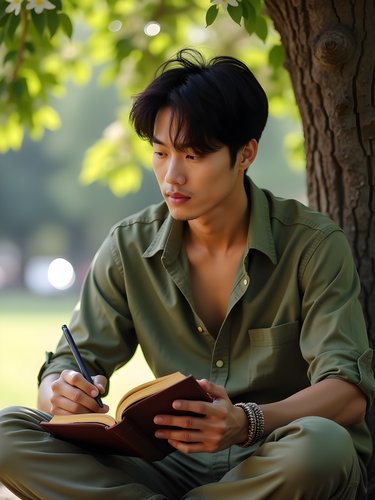
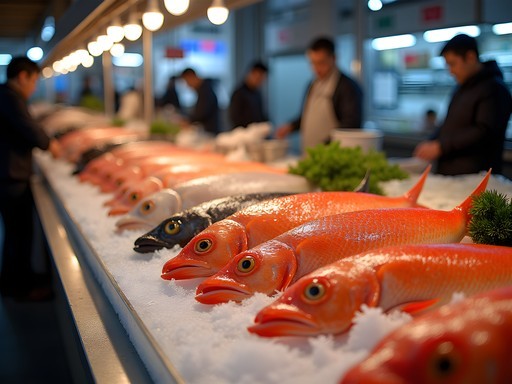







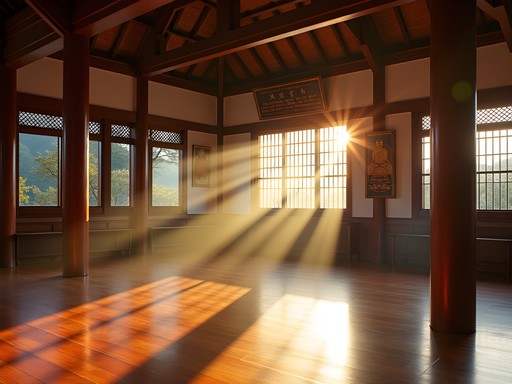
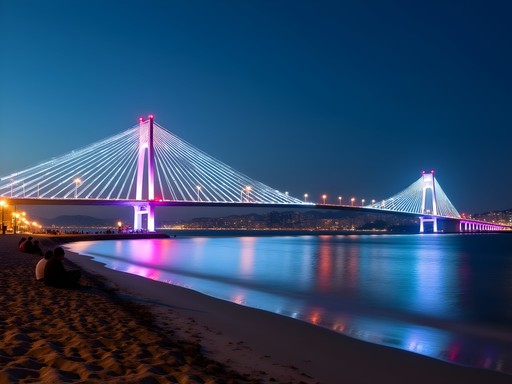
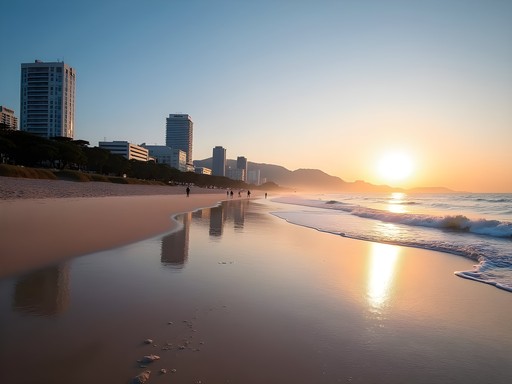

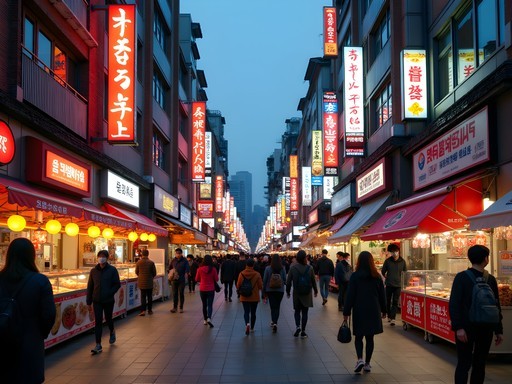



Comments
noodle_hunter
Don't miss the dwaeji gukbap (pork soup with rice) in Busan! It's not seafood but it's a local specialty and sooooo good after a night of soju!
sunsetgal
Omg yes! Had this when I was nursing a soju headache and it was LIFE CHANGING!
TravelWithMike
Going to Busan next month! Is Jagalchi Market suitable for early morning visits or better in afternoon?
Connor Brown
Early morning (6-7am) is when you'll see the actual fish auctions and most local action! By 9am it's set up for tourists. Both experiences are great but different vibes entirely.
TravelWithMike
Perfect, thanks! Will try for an early morning visit then.
KoreanFoodFan
Those night photos of the pojangmacha tents are giving me serious wanderlust! 😍
Jean Wells
Connor, your analysis of Busan's culinary landscape is quite comprehensive. Having visited Busan annually for the past decade due to my proximity in Yokohama, I've observed the evolution of the pojangmacha scene around Haeundae. I would add that timing is crucial - visiting between 8-10pm offers the optimal balance between atmosphere and availability. The vendors near the northern end tend to be less tourist-oriented and more authentic in their preparation methods. I've found carrying a small Korean phrasebook specifically for food terms invaluable, as many of the best proprietors speak limited English but appreciate the effort. The contrast between Jagalchi's commercial approach and the family operations at Gukje is particularly noteworthy.
Connor Brown
Jean, that timing tip is spot on! I completely agree about the northern vendors too - there's one older couple who've been running their pojangmacha for 30+ years and their ganjang gejang is unmatched. Your systematic approach to exploring food cultures always impresses me.
seafoodie45
Question for both of you - I have a mild shellfish allergy (can eat fish but not crustaceans). Will I struggle in Busan? Any recommendations for someone like me?
Jean Wells
Seafoodie45 - You won't struggle at all. Busan offers extensive fish options separate from shellfish. I recommend carrying a translated allergy card (I use allergy cards when traveling) and focusing on the grilled fish stalls. The mackerel (godeungeo) is exceptional and widely available without cross-contamination.
sunsetgal
OMG this post brought back so many memories!! I went to Jagalchi Fish Market last year and was totally overwhelmed (in the best way). That octopus thing where it's still moving on the plate? I chickened out lol. But the grilled fish was AMAZING. Connor, did you try the sea squirt? That was the one thing I couldn't handle - the taste was just too much for me!
Connor Brown
Haha yes, I've tried sea squirt many times! It's definitely an acquired taste - took me about 3 visits to Busan before I could actually enjoy it. The moving octopus (sannakji) is a rite of passage though! Maybe on your next visit?
sunsetgal
Next visit for sure! Planning to go back next spring. Your post has me so excited to try more food adventures!
Savannah Walker
Connor, your post captures the soul of Busan's food scene perfectly! I spent three weeks there last fall and completely fell in love with the pojangmachas along Haeundae Beach. There's something magical about sitting on those tiny plastic stools, drinking soju with locals while the ocean breeze hits your face. My favorite memory was when a group of elderly Korean men invited me to join their table and insisted I try every dish they ordered. Despite the language barrier, we communicated through food and laughter for hours. I'd recommend visitors bring their pocket translator - it helped me learn the names of dishes and make local friends. Connor, did you find the seafood in Busan noticeably different from other coastal cities in Korea?
luckygal
Those plastic stools are surprisingly comfortable after a few shots of soju 😂 When's the best time to visit the pojangmachas? We're planning a trip in November!
Savannah Walker
November is actually perfect! The summer crowds are gone but it's not too cold yet. The pojangmachas at Haeundae start getting lively around 7-8pm, but my favorite time was around sunset. Just bring a light jacket - that sea breeze can get chilly!
luckygal
Omg your post is giving me major flashbacks to my trip last year! Jagalchi Fish Market was WILD - I tried things I couldn't even pronounce lol. The ajummas there kept giving me extra side dishes when they realized I was trying to speak Korean. Did you try the live octopus? I couldn't bring myself to do it but my boyfriend did and nearly choked when one of the tentacles stuck to his throat! 😂
Savannah Walker
The ajummas at Jagalchi are the BEST! They practically adopted me on my last visit. And yes to the live octopus story - happened to my friend too! Pro tip: chew thoroughly and wash it down with soju 😉
luckygal
Haha wish I'd known that soju tip before! Next time for sure. Did you have any favorite stalls at BIFF Square?
Savannah Walker
The hotteok stand near the main entrance was my addiction! I think I had one every single day I was there. That sweet, nutty filling is just perfect after a cold day exploring!
starvibes
Is it expensive to eat at the fish market? Do they try to overcharge tourists?
redadventurer
In my experience, prices at Jagalchi are clearly marked per weight. The real trick is to observe what locals are buying and which stalls are busiest. We found it pricey but worth it for the ultra-fresh seafood!
Connor Brown
Great advice from @redadventurer! I'd add that prices are negotiable if you're buying larger quantities. Showing interest in their products and attempting a few Korean phrases can sometimes get you a better deal or some free side dishes.
Marco Flores
Connor, your post transported me back to my backpacking trip through Korea! The pojangmachas near Haeundae beach were where I had my most authentic experiences. One night, a fisherman invited me to join his friends, and despite the language barrier, we communicated through food, soju, and laughter. The raw fish they ordered wasn't on any menu - straight from that day's catch! If anyone's visiting, don't be afraid to venture beyond the tourist spots. The tiny alleyways behind Jagalchi have family-run restaurants where grandmothers cook recipes passed down for generations. Just bring a sense of adventure and a healthy appetite!
luckynomad
Heading to Busan next month - is it easy to find vegetarian options at these markets? Or should I stick to restaurant areas?
Connor Brown
There are definitely vegetarian options, especially at Gukje Market! Look for bibimbap (just ask for no meat), vegetable tempura, and various banchan (side dishes). Many Buddhist temple restaurants also offer amazing vegetarian food - I recommend Samgwangsa Temple's restaurant.
Venture X
Premium card with 2X miles, $300 travel credit, Priority Pass